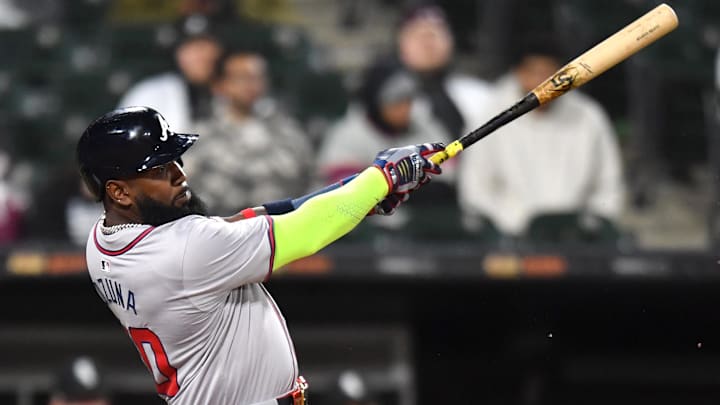Braves designated hitter Marcell Ozuna is underappreciated
In 2023, Marcell Ozuna:
- Hit 40 homers, good for sixth most in baseball and third on the Braves.
- Slugged .558, good for seventh among all qualified hitters in baseball.
- Posted a .381 wOBA, good for tenth among all qualified hitters in baseball.
- Ended the season with 139 wRC+, eleventh among all qualified hitters in baseball.
Ozuna has started the 2024 season healthy and hot. He’s currently batting .326/.367/.696 with a 1.063 OPS, five homers, and 13 RBI through 11 games. Fans love him when he’s hot, but don't cut him slack when he strikes out…well, not as much as they have for others.
BIG BEAR WITH *ANOTHER* BIG FLY‼️ pic.twitter.com/3KXNwjy8sM
— Bally Sports: Braves (@BravesOnBally) April 7, 2024
He’s a flawed hitter, and he can look terrible swinging at those disappearing sliders, but that’s part of the reason he’s so dangerous.
Misunderstanding Marcell Ozuna
I’ve often been less than inspired by watching Ozuna at the plate. He can’t seem to lay off of a low and away slider, and sometimes his backside heads to the dugout when he’s still in the process of swinging. That’s improved these days but those slider swings are still…annoying. I digress.
I believed he struck out too much but I was wrong (I’m saying that a lot in this post). His 22.6% K-rate is almost exactly league-average and lower than that of Matt Olson (23.2%) and Austin Riley (24.1%).
In the past, I said that his 32.6% O-Swing rate was awful and that he’d be a better hitter. I was, at least partially, wrong. I stumbled over a few things I didn’t know last week. That‘s not unusual of course, but one of the most interesting convinced that his success, the success we’re seeing now, comes not despite his chase rate but because of it
A post by Robert Orr for Baseball Prospectus last November discussed how Cory Seager managed to bat .327/.390/.623/1.013, hit 33 homers, drove in 96 runs, and despite posting a 40% chase rate, “has arguably the purest approach in the game for a hitter."
The post isn’t behind a paywall, so I won’t delve too deeply into the statistics provided or how he developed a new metric he calls SElective AGgression Engagement Rate (SEAGER) - I’ll cut to the bullet points. His research shows that:
- Plate discipline is more than just drawing walks.
- What you swing at—hittable pitches—is more important than what you don’t—balls outside the zone—when the goal is improving quality of contact.
- Balancing both is the best thing a hitter can do: that’s what the SEAGER measures.
A player’s SEAGER score shows how often he chose to swing at hittable non-strike pitches and how often they did damage with those swings.
The SEAGER is named after Cory Seager because his 25.8% is the highest score on the list. Harper is second with 24.9%, and Acuña is tied with Mike Trout in 3rd with a 24.1% score. Two more Braves check in with at least 20%; Matt Olson is 19th with 21.1%, and Marcell Ozuna at 28th with 20.7%. Austin Riley’s 19.9% just missed the magic 20% cutoff and put him at 39th.
